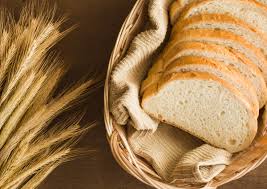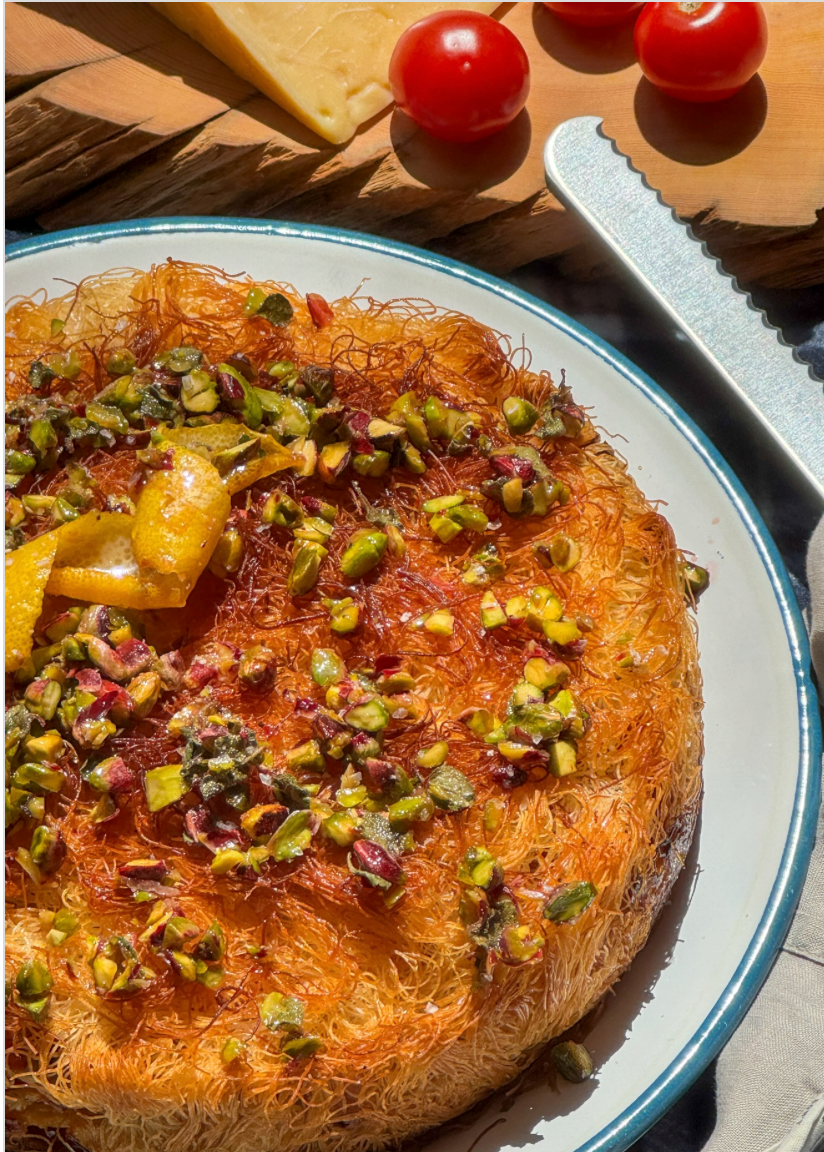Ancient is modern
- rosemary
- Jun 8, 2021
- 7 min read
Updated: Jul 22, 2021
"The rise of ancient grains is, above all, a feat of marketing."
New York Times

This is not going to be a post about what you can do with particular ancient grains, and only in part one my frequent rants about the health food industry, no it's just going to be a few comments from here and there about 'ancient grains' in our lives today. A few random things I have learnt.

The impetus for this? Well there were three - and when you get to three random but linked things, it's time to consider them. The first was a few weeks ago when I watched a pretty old Cook and the Chef program in which Simon Bryant cooked something with farro. I can't remember what now but I didn't know much about farro, so noted it down in my list of potentials. Then came this - in this month's Woolworths Fresh Ideas magazine on the last page - a mini question and answer thing about freekeh. From this I learnt that freekeh is actually a form of wheat - green wheat, roasted or smoked with the husk rubbed off.

Finally in last week's Guardian newsletter was an article on what to do with sorghum - the grain shown here. So sorghum went on to my list too. I do not know much about sorghum - it has a vaguely biblical ring to it to me. But then it is classed as an ancient grain.
Not that there is really any official definition of an ancient grain. The closest you will come to that is from the Whole Grains Council who say that they are:
"grains that are largely unchanged over the last several hundred years"
Which would mean, of course, that modern day wheat is not 'ancient', even though wheat, of course, is. Down through the centuries farmers have fiddled with wheat to increase yields, reliability and whatever else modern - indeed ancient - agriculturalists do to improve their crops. Indeed the same has happened to those two other staple cereal crops of the world - maize and rice - which will not get much of a look-in today I'm afraid.
So what was the first grain to be cultivated? According to Wikipedia:

"Starting from around 9500 BC, the eight Neolithic founder crops – emmer wheat, einkorn wheat, hulled barley, peas, lentils, bitter vetch, chickpeas, and flax – were cultivated in the Levant. Rye may have been cultivated earlier, but this claim remains controversial. Rice was domesticated in China by 6200 BC with earliest known cultivation from 5700 BC, followed by mung, soy and azuki beans."
(I tried to find an ancient piece of Sumerian art to show their agriculture, but they only seem to have been into battle scenes. Which says something.) Wikipedia does not mention the Americas at all and maize - which is interesting, considering that it's content is largely American. The Incas called maize 'the mother grain', but I do not know how far back its cultivation goes.
Note also from that quote about truly ancient grains - einkorn and also emmer which is otherwise known as faro or farro - two modern ancient grains. And both a kind of wheat and both increasingly trendy. One assumes that modern-day wheat is descended from the ancient forms, and is therefore superior, so why go back to the beginning? Maybe the taste is the thing - maybe they actually taste better. Writers often use the word nutty to describe them all. The yield must surely be smaller though - hence the high price of them all I guess.
I found one website that listed the top five in order of good taste - fonio, quinoa, khorasan, farro/emmer and teff - list that includes the pseudo grains and the other cereals. Interesting though.
Other wheats from ancient times that are reappearing are khorasan - commercially known as kamut, spelt and burghul. Which means of course, that perhaps contrary to popular thought, they are not gluten free. Then there's triticale, which you may well find defined as ancient grain, when in fact it is a modern hybrid of wheat and rye. Initially it was hybridised in 1875, but it was found to be sterile and it was not until somewhere between the 30s and 60s of the last century that they worked out how to make it fertile. And yet it is referred to as ancient by many including my favourite Bert Greene who back in 1988 included three 'Ancient grains' - quinoa, amaranth and triticale in his wonderful Greene on Grains. My even older Wholefood Book just says that "The other grains are sorghum, millet and buckwheat" which is a very limited range of options when compared with today. Also not to be forgotten in this category are semolina and couscous which actually, of course, are just different forms of processed wheat. Last but not least in this category is another hybrid wheat called Kernza which is being developed by The Land Institute, although I'm not sure whether this is a new grain or just a new wheat. Kernza® is a trade name and they have high hopes for it. A lot of work is being done on developing new and productive grains, largely because of the changing climate conditions and the increasing population of the world.

I think the modern 'ancient grains' thing started sometime around 2010-12 with the notorious quinoa, which seems to have become so mainstream that nobody talks about it anymore. The interesting thing about it is that, it is not a grain at all, but a seed. Mind you I suppose wheat is a seed too, so I'm not quite sure where the difference lies. Quinoa is not classed as a cereal though. A cereal, I now see, is a seed extracted from a grass apparently and quinoa is not a grass - just a plant. Into this group of ancient non cereals fall - buckwheat, amaranth, chia, sesame, kaniwa, hemp and flax - and maybe you should include chick peas as well, although then you are straying into legume territory, so let's not.

Chia is an interesting one here, as I saw one article that said that this man here - John Foss a Western Australian farmer and founder of Chia Co. is the man who made the world fall in love with chia. According to the article I found, he is now the world's largest producer of chia. Since this was an Australian article I'm not completely convinced, but nevertheless good on him.
"The Chia Co’s production base can satisfy global demand and chia is now the largest food crop in WA’s Ord Valley, where growers use satellite guidance technology and moisture-sensor probes to support gravity-fed irrigation." Grains Research and Development Corporation Australia
I have noticed recently that hemp and flax are appearing in the health food aisles of the supermarkets and finding their way into wholegrain products. Now what does wholegrain mean in the light of this whole topic? To me wholegrain means that the grain or seed has not been processed and is more or less in its original form, but I'm now beginning to doubt that definition.
"Whole grains are generally healthier than refined ones, and are recommended as a replacement for them by the U.S. Department of Agriculture, because they take longer to digest, which means that blood sugar rises and falls less rapidly as your body processes them. Still, they’re not all that nutritional compared with, for instance, fruits, nuts, and legumes" David Ludwig - Obesity Prevention Centre, Boston
Anyway - below - hemp and flax - which I used to know as where linen came from.
Then what about those other 'ancient grains' - the other cereals (grasses remember) - which fall somewhere between modern day, highly modified wheat, rice and maize, and the relatively untouched ancient grains - whether they be cereal or just a plant - 'pseudo cereals' to some. I am talking here about rye, barley, oats, millet, wild rice and the lesser known teff, and fonio. Certainly the first four have been much tinkered with in their thousands of years of history. Fonio is apparently a kind of millet and teff is from Ethiopia. Teff is being grown here in Australia with high hopes, but in spite of a reputation of being very hardy, it has apparently taken some time to develop it to be an easy grow.

We Australians are still mainly eating wheat, but according to Unilever foods, in 2021:
"Wheat, oats, rye, millet, sorghum, quinoa, corn and barley are the most commonly eaten grains in Australia." Unilever Food Solutions 2021
Which is an interesting list. Quinoa has definitely made it, but sorghum? and millet - even barley. Who would have thought it? And actually further on in that article from Unilever, who you would think had an eye on the market, they listed as 'on trend' - hemp, barley, buckwheat, freekeh and farro/emmer.
Grains were the first crops to be grown because you could make bread from them, and bread of some kind or another is what keeps the poorest people of the world going. However you won't be seeing bread made from many so-called ancient grains anytime soon - not as the flour component anyway because:
"it's still quite hard to make a decent loaf of crusty bread from alternative grains. Rather, we predict more variety in the bakery, bulk, and cracker sections of the grocery store." Caitlin Sherwood - Room 214
because:
"for manufacturers to use heritage grains, requires specific methods, special enzymes and certain special baking techniques.” Greek Food News
Have you ever tried to make rye bread? Tricky to get it to rise. But it. an opportunity for the artisanal bread maker who can experiment with small batches and charge high prices. The queue for the special bread shop in Eltham at the weekend was very, very long.
And why should we eat all of these very trendy grains? Why are they in the health food aisles? Are they healthier?
"frequently touted as being considerably more nutritious than traditional grains such as wheat, oats and rye – more than likely to justify their often considerable price tags. These trendy grains are now a selling point for many products on supermarket shelves and are commonplace on restaurant and café menus" Grains and Legumes Nutrition council
Yes - probably biased, but it's an opinion I saw touted in many places. And if those ancient grains are then put into sugary cereals, muesli bars and the like then they really aren't nutritious at all. I even saw one article that said that they could in fact contribute to Diabetes 2.
"Contrary to common perception, wheat is a particularly nutritious grain, even when compared to ancient grains like quinoa." Grains and Legumes Nutrition council
And these days even your basic white bread is probably rather healthier than it used to be, sometimes it's even artisan.










Comments